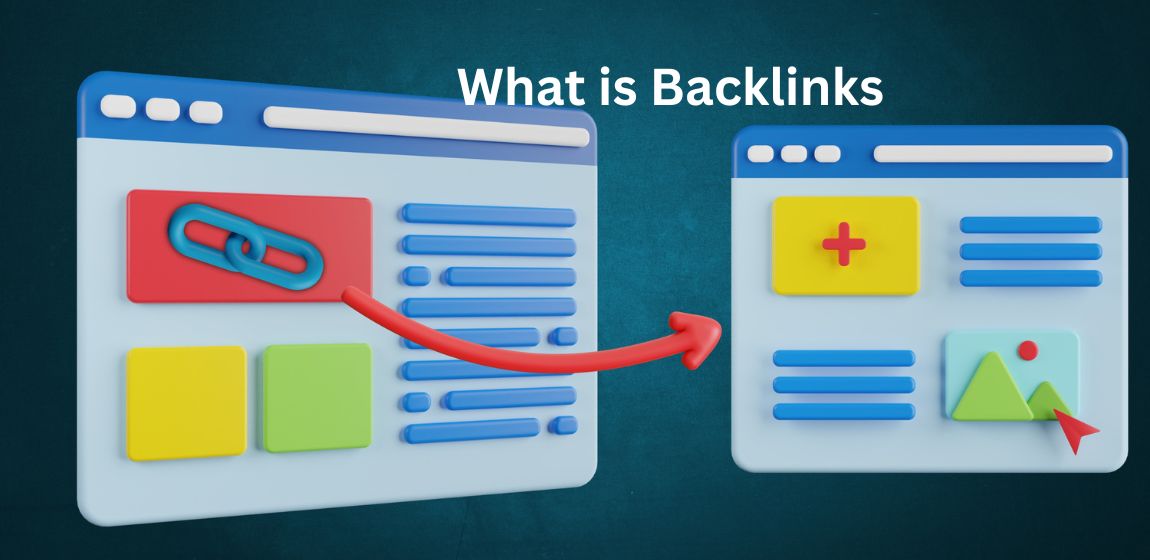In the world of digital marketing and search engine optimization (SEO), backlinks are often considered the secret sauce that can propel your website to greater heights. However, in this article, we will explore the fascinating world of backlinks and types of backlinks, what is backlinks, why they are crucial for your website’s success, and how they can impact your website’s authority and ranking on search engines.
What is a backlink?
A backlink, simply put, is a link from one website to another. It’s like a digital vote of confidence. When one website links to another, it’s essentially saying, “Hey, this website is valuable and trustworthy.” Search engines like Google take note of these votes, and they play a significant role in determining a website’s credibility and relevance.
Why Backlinks Are Important
Imagine the internet as a vast web of interconnected information. Backlinks act as the threads that weave this web together. They are crucial for several reasons:
- Improved Search Engine Ranking: Backlinks are a major factor in search engine ranking algorithms. Websites with more high-quality backlinks tend to rank higher in search results.
- Increased Traffic: Backlinks from reputable sources can drive targeted traffic to your website. When someone clicks on a backlink from another site, they’re directed to your content.
- Credibility and Trust: Backlinks from authoritative websites signal trust and credibility to both search engines and users. It’s like getting a recommendation from an expert.
Do backlinks play a role in ranking?
Yes, they do. Backlinks are like the currency of the internet. Search engines use complex algorithms to determine a website’s ranking in search results, and backlinks are a significant part of that equation.
However, not all backlinks are created equal. The quality and relevance of backlinks matter. High-quality, relevant backlinks from authoritative websites have a more significant impact on your ranking than a multitude of low-quality links.
Quality-able Backlinks
Building high-quality backlinks should be a priority in your SEO strategy. However Here are some tips to consider:
Guest Posting: Contribute valuable content to reputable websites in your niche. In return, you’ll get a backlink to your site.
Content Marketing: Create exceptional content that others want to link to naturally. Quality content attracts quality backlinks.
Outreach: Reach out to websites in your industry and suggest collaboration or content sharing opportunities that include backlinks.
Types of backlinks
Backlinks are links from one website to another, and they come in various types based on their attributes and characteristics. These different types of backlinks can have varying levels of impact on a website’s search engine rankings and overall online visibility. Here are some common types of backlinks:
- Natural backlinks: These are links that are created organically without any intentional effort from the website owner. They are typically the result of high-quality content that others find valuable and link to voluntarily.
- Editorial Backlinks: Editorial backlinks are links that are included within the content of a webpage because the content’s author or editor finds them relevant and valuable to their readers. These are often considered high-quality backlinks.
- Guest Post Backlinks: When you contribute a guest post or article to another website or blog, you can often include a backlink to your own site within the content. Guest post backlinks can be valuable if they come from authoritative and relevant sources.
- Forum Signature Backlinks: Some online forums allow users to include links in their forum signatures. These are generally low-quality backlinks and can be seen as spammy if overused.
- Directory Backlinks: Website directories are platforms that list websites by categories. While some reputable directories can provide decent backlinks, many directories have lost value in terms of SEO due to abuse and low-quality listings.
- Social Media Backlinks: Links from social media platforms like Facebook, Twitter, and LinkedIn can indirectly influence SEO. While they are not traditional backlinks, they can drive traffic and improve a website’s visibility.
- Reciprocal Backlinks: Also known as “link exchanges,” these occur when two websites agree to link to each other. Search engines have become more cautious about reciprocal linking, and excessive reciprocal links can be viewed as manipulative.
- Nofollow and Dofollow Backlinks: Nofollow and dofollow are attributes applied to HTML links. Nofollow links tell search engines not to follow the link or give it much SEO value, while dofollow links allow search engines to follow the link and pass some authority to the linked page.
- Contextual backlinks: These are links embedded within the content of a webpage, often in a way that is relevant to the topic being discussed. Contextual backlinks are
- generally more valuable than links placed in sidebars or footers.
- Image Backlinks: When an image on one website links to another, it is considered an image backlink. Alt text and image file names can be optimized for SEO.
- Anchor Text Backlinks: The text used as the hyperlink to another webpage is called anchor text. It can be optimized to include keywords related to the linked page for SEO purposes.
- Blog Comment Backlinks: Leaving comments on blog posts with a link back to your website is a common practice. However, many blog comments are no followed or moderated to combat spam.
- Resource Page Backlinks: Some websites have resource or “links” pages where they list useful websites or tools. Getting your site listed on relevant resource pages can be beneficial.
What types of backlinks will not be created?
While backlinks can work wonders for your website, there are some types you should steer clear of:
- Paid Links: Buying backlinks is against Google’s guidelines and can result in penalties.
- Irrelevant Links: Backlinks from unrelated websites don’t carry much weight and can even harm your SEO efforts.
- Low-Quality Directories: Links from spammy directories can hurt your reputation.
What types of backlinks can I make for free?
Yes, you can. There are several legitimate ways to acquire free backlinks:
Social Media Profiles: Ensure your social media profiles include links to your website.
Business Directories: List your business in reputable online directories.
Forums and Communities: Participate in forums and communities related to your industry and include your website link in your profile.
Difference Between No-Follow and Do-Follow Backlinks
Understanding the distinction between these two types of backlinks is essential.
No-Follow Backlinks:
These links have a “nofollow” attribute, signaling to search engines not to pass authority to the linked website. They can still be valuable for traffic and brand visibility.
Do-Follow Backlinks:
These links pass authority from the linking website to the linked website. They are highly valuable for SEO.
Building backlinks increases the DA and DR of a website. Check Doman Authority website through Moz
You can also read this article
Conclusion
In the ever-competitive online landscape, harnessing the power of backlinks is not just an option; it’s a necessity. Backlinks can elevate your website’s authority, improve your search engine ranking, and ultimately drive more traffic to your content.
Remember, the key is not just to build backlinks but to focus on quality and relevance. By doing so, you can make the most of this powerful SEO tool and watch your website climb the ranks in search engine results. So, go ahead, start building those valuable backlinks, and watch your online presence soar.


